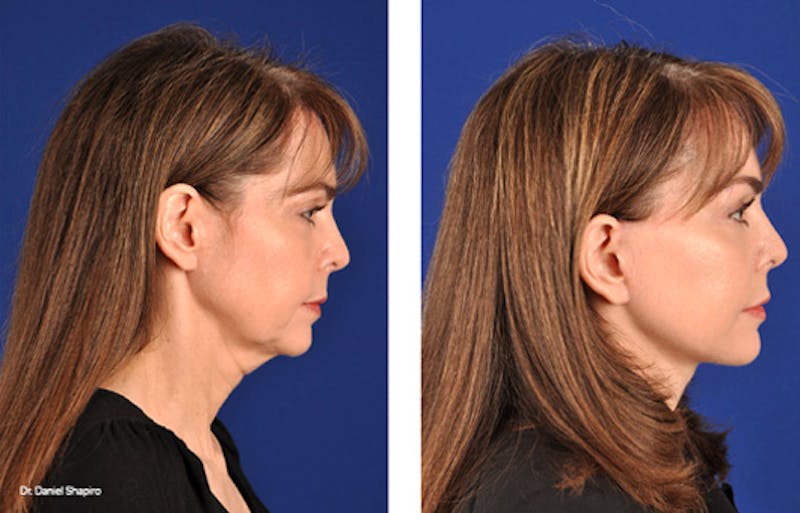
Facelift surgery is a transformative procedure that can rejuvenate your appearance, offering a more youthful and refreshed look. While concerns about scarring are natural, they are an inherent part of the healing process. The good news is that with proper aftercare and the use of advanced surgical techniques, scars can be minimized to blend seamlessly with your natural features. By adopting these best practices for recovery, you can achieve optimal results with minimal visible scarring—especially under the expert care of our board-certified plastic surgeon, Dr. Daniel Shapiro.
Understanding Facelift Scars
Facelift incisions are strategically placed to minimize their visibility. Common locations include:
- Around the Ears: Incisions often follow the natural contours of the ear, extending from the front to behind the ear and into the hairline. This strategic placement helps scars remain discreet.
- Along the Hairline: Some techniques may involve extending incisions into the hairline to conceal scars within the scalp further.
Over time, these scars typically fade, softening in texture and blending with surrounding skin.
Tips for Reducing Facelift Scars
Minimizing scars after facelift surgery requires a combination of proper care, time, and guidance from your surgeon. Here are some effective strategies:
1. Follow Post-Operative Instructions
We will provide detailed aftercare instructions tailored to your procedure. These may include cleaning incision sites, applying prescribed ointments, and avoiding activities that could strain healing tissues.
2. Protect Your Skin from the Sun
Sun exposure can darken scars, making them more noticeable. Use a broad-spectrum sunscreen with SPF 30 or higher and wear a wide-brimmed hat to shield your face during recovery.
3. Use Silicone-Based Scar Treatments
Silicone gels or sheets can help soften and flatten scars over time. These treatments create a protective barrier that hydrates the skin and promotes healing.
4. Avoid Smoking
Smoking can impair circulation and slow healing, increasing the risk of noticeable scarring. Quitting smoking before and after surgery is essential for optimal recovery.
5. Stay Hydrated and Maintain a Healthy Diet
Adequate hydration and a balanced diet rich in vitamins and minerals, especially vitamin C and zinc, support the body’s natural healing processes.
6. Consider Laser or Light-Based Treatments
For persistent or raised scars, treatments like laser resurfacing or intense pulsed light (IPL) can improve their appearance by targeting discoloration and stimulating collagen production.
The Role of Your Surgeon
Choosing an experienced and meticulous plastic surgeon is one of the most important factors in minimizing scars. We prioritize precise incision placement and advanced suturing techniques to ensure scars are as inconspicuous as possible. Additionally, Dr. Shapiro offers personalized post-operative care to help you navigate the healing process successfully.
A Long-Term Perspective on Scars
Facelift scars evolve over time, going through distinct healing phases. Initially, they may appear red or raised, but with proper care, they lighten and soften. By the end of the first year, most scars are subtle and blend harmoniously with the natural contours of your face.
Empowering Your Recovery
At Shapiro Aesthetic Plastic Surgery, your comfort and confidence are our top priorities. From pre-operative planning to post-operative care, Dr. Shapiro and our team are dedicated to helping you achieve stunning results with minimal visible scarring. If you’re considering a facelift or have questions about the healing process, contact our Scottsdale office today to schedule a consultation.


